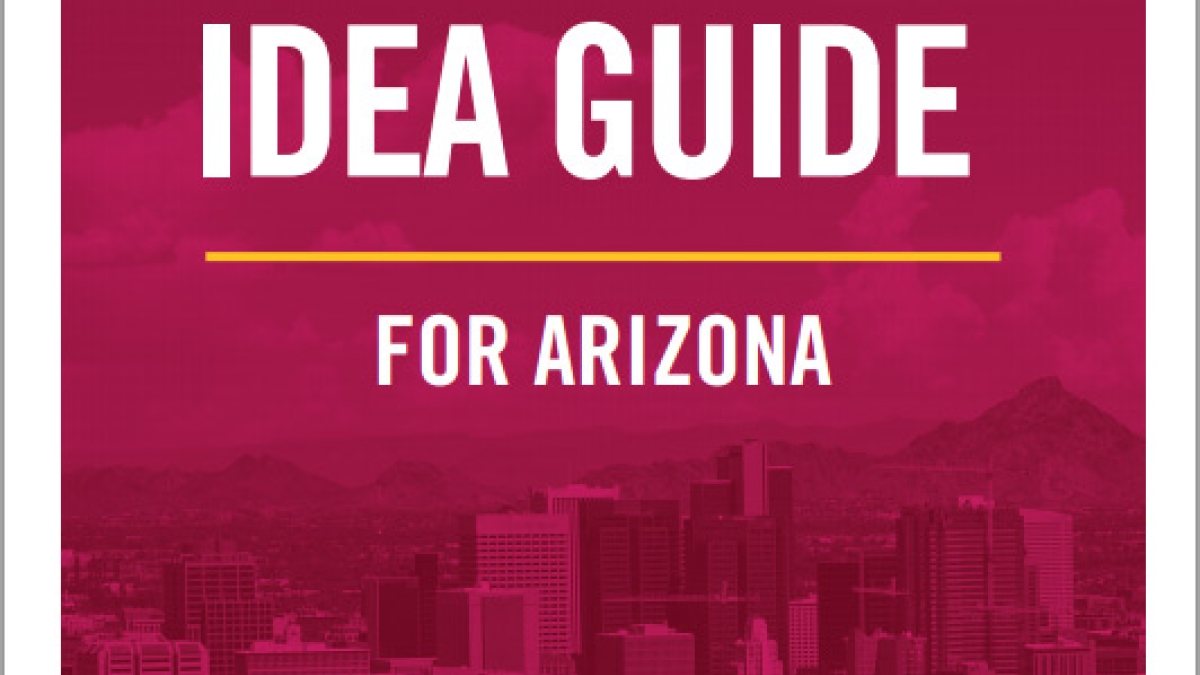Energy Efficiency Guide inspires action, sustainability

If you saw historical utility costs in home or office listings, would it impact where you decide to live and work? If utilities posted contractors’ performance ratings online, would it impact who you hire to retrofit your home or office for energy efficiency?
These may seem like no-brainer opportunities to help you make better energy efficiency decisions, but they are actually quite complex to implement. However, these opportunities can save you big bucks in the long run. How your home or building functions as a whole – and how you function within the building – has great impact on environmental and economic sustainability. That’s why a team of researchers and managers from ASU’s Global Institute of Sustainability has created the Energy Efficiency Idea Guide for Arizona.
The guide includes 46 energy efficiency methods or “ideas” for policymakers and stakeholders organized by 11 categories such as sustainable behavior, energy performance and economic incentives. Mick Dalrymple, the guide’s author, indirectly started the guide when he was organizing and tracking the multitude of local and national energy efficiency programs.
“There was not one location that consolidated all the different barriers and opportunities to promoting energy efficiency, particularly in Arizona,” he says. “This can be a national guide, but it is tailored to our economic and regulatory environment and how we operate in a hot, arid climate.”
Behind each idea is months of research by city officials, energy efficiency experts and policymakers. Dalrymple and his team are working on in-depth briefs for each idea that flesh out specifics and directions. These briefs will then be available online for easy download and accessibility.
Accessibility was the main goal in the guide’s creation. That is why this one digests the scientific jargon into easy-to-read tips – kind of like a “How To” book. This will make it easier for policymakers and city officials to implement energy efficiency programs in Arizona and in similar climates elsewhere.
“We want to inspire stakeholders like nonprofits, cities, utility companies, real estate agents and brokers to convene around ideas and flesh them out into a policy or program, and implement those actions,” says Dalrymple. “This guide is structured to be very concrete with a bias towards action. The methods can be adopted to any place in the world in terms of energy efficiency, or adapted to other subject matter like renewable energy and water issues. You don’t have to be a specialist in a certain field to understand it – the language is very accessible.”
The energy efficiency ideas cover business and residential sectors while focusing on behavior change and more tangible methods like performance tracking. Each idea identifies its specific purpose, stakeholders, targeted audience, and challenges. Sharing challenges is a unique approach, but Dalrymple hopes it will minimize barriers and identify solutions.
“We purposely talk about the challenges in depth and share how other states have solved those challenges,” says Dalrymple. “My hope is that a few of these ideas get implemented quickly. I hope we then continue to educate people and get several more of these ideas done within the next couple of years.”
You can access the Energy Efficiency Idea Guide for Arizona here: energize.asu.edu/.

